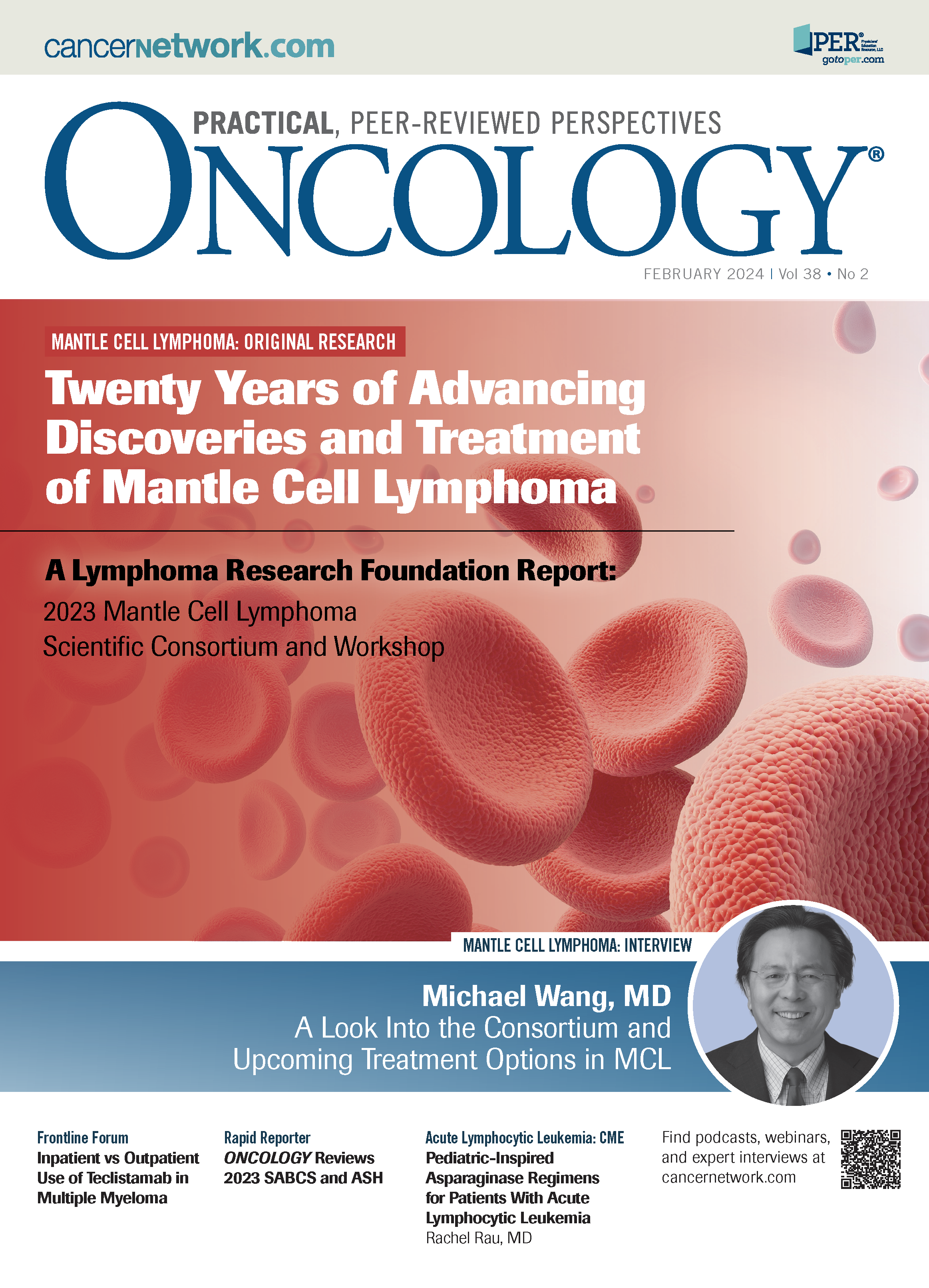MCL Treatment Advances and Future Directions
Martin Dreyling, MD, spoke about the potential use of CAR T-cell therapy in earlier treatment stages for certain patient groups with mantle cell lymphoma.
Martin Dreyling, MD, spoke about the potential use of CAR T-cell therapy in earlier treatment stages for certain patient groups with mantle cell lymphoma.

In the field of mantle cell lymphoma (MCL), the focus is on the increasing role of Bruton's tyrosine kinase (BTK) inhibitors and the potential of immunotherapy. Martin Dreyling, MD, highlights the shift in standard first-line treatment for MCL from chemotherapy alone to now incorporating BTK inhibitors, particularly for patients with relapsed disease.
CancerNetwork spoke with Dreyling, professor of medicine in the Department of Medicine and head of the Medical Clinic III at the University of Munich-Grosshadern in Germany, regarding research he presented during the 20th MCL Consortium and Scientific Workshop hosted by the Lymphoma Research Foundation. He emphasizes the potential of BTK inhibitors to become the mainstay of treatment in the next five years, with ongoing research focused on their use in earlier treatment stages.
Overall, Dreyling is optimistic for the future of MCL treatment, with BTK inhibitors and immunotherapy emerging as powerful tools. Continued research on optimizing treatment strategies and personalizing approaches based on individual patient characteristics is crucial for further advancements.
How do you think the standard of care will be impacted based on the discussions from the consortium?
Dreyling: In mantle cell lymphoma [MCL], the standard first-line treatment was based on chemotherapy only. Now on the other hand, we do know that in relapsed disease, this has switched to targeted treatment, essentially BTKis, as they are the cornerstone [of treatment], at least in the early relapses of MCL. Therefore, for the next 5 years or so, the field will be moving to implement this application also in the first-line treatment of MCL.
What topic presented do you think was the most prevalent?
Dreyling: It depends on what your priorities are. There are very interesting data on the molecular makeup of MCL. When it comes to clinical application or therapeutic application, I think it’s mainstream to consider BTKi plus [an additional treatment]. The other strong impact is the future role of immunotherapy. Now we know that chimeric antigen receptor [CAR] T cells are registered for relapsed MCL, essentially for BTKi failures, but the field is moving on. There are already some studies completed with patients who are BTKi naive. It might well be that at a certain point, we think that some patients may be treated with immunotherapy and others may be treated only with targeted treatment.
Can you explain some practice differences between the United States and Europe?
Dreyling: When it comes to, let’s say, the strategies, they’re quite similar; however, we do have a different registration status. Specifically, when referring to BTKis. Because in Europe, ibrutinib [Imbruvica] is the only registered BTKi, whereas in the US, it was withdrawn from the market at least for the indication of relapsed MCL.1 But [in the US] you have acalabrutinib [Calquence] and zanubrutinib [Brukinsa], both of them second-generation BTKis. What we assume is that the second-generation BTKis are better tolerated, so their [adverse] effects are less. However, [when looking at] efficacy, there is no major difference.
Looking at the year ahead, are there any trials you’re excited to see read out?
Dreyling: The major theme is to challenge chemotherapy overall in the first line, so we have established a combination chemotherapy plus BTKi. Namely, the phase 3 TRIANGLE trial [NCT02858258], where we have established the significant benefit of ibrutinib as the first-generation BTKi, and my understanding is that this was also implemented in the US guidelines, and then mentioned that you could also apply second-generation BTKis.2 Although we don’t have the data [yet], I think it’s obvious that with a similar efficacy, and with a better tolerability that makes sense. On the other hand, the next wave, I would say, of studies is moving a noncytostatic approach into first-line [therapy]. Some of these data are already available. We do have data from MD Anderson [Cancer Center], and we do have data from Barcelona, in patients with low-risk [disease], using a clear-cut randomized comparison of chemotherapy vs a nonchemotherapy approach. There are at least 2 studies that have completed recruitment: one is the phase 2/3 ENRICH trial [NCT01880567], [comparing ibrutinib plus rituximab (Rituxan) followed by rituximab maintenance vs rituximab plus chemotherapy].3 We are already working on the next study generation, which is investigating not only BTKi monotherapy but also combinations of BTKi plus [another treatment].
What should be a take-home message for your colleagues?
Dreyling: The most important point when it comes to clinical application is that there is not 1 [type of] MCL, but there are essentially 2 types. The classical MCL can achieve long-term remissions over a couple of years, maybe even decades with our current standard of care. On the other hand, we have these aggressive subtypes, and they’re identified by 3 major factors: P53, high cell proliferation, and blastoid cytology. These patients do much worse. In these patients, we have to work on that, and I believe that [these patients] will be the first ones who will benefit from the new treatment approaches.
References
- Update on IMBRUVICA (ibrutinib) U.S. accelerated approvals for mantle cell lymphoma and marginal zone lymphoma indications. News release. Johnson & Johnson and Pharmacyclics. April 6, 2023. Accessed January 22, 2024. bit.ly/3ZUpDnJ
- Dreyling M, Doorduijn JK, Gine E, et al. Efficacy and safety of ibrutinib combined with standard first-line treatment or as substitute for autologous stem cell transplantation in younger patients with mantle cell lymphoma: results from the randomized Triangle trial by the European MCL Network. Blood. 2022;140(suppl 1):1-3. doi:10.1182/blood-2022-163018
- Jain P, Zhao S, Lee HJ, et al. Ibrutinib with rituximab in first-line treatment of older patients with mantle cell lymphoma. J Clin Oncol. 2022;40(2);202-212. doi:10.1200/JCO.21.01797

Highlighting Insights From the Marginal Zone Lymphoma Workshop
Clinicians outline the significance of the MZL Workshop, where a gathering of international experts in the field discussed updates in the disease state.